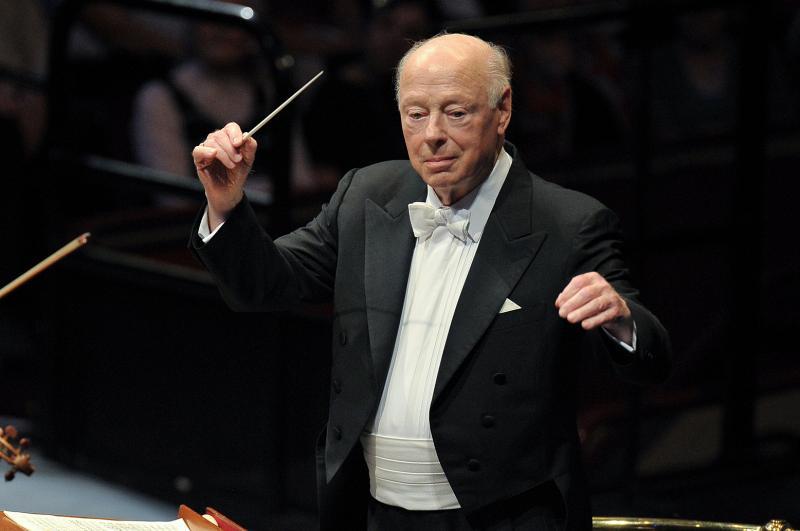Bernard Haitink is one of the great Bruckner conductors of our time. His interpretations are expansive yet vivid and always go straight to the heart of the music. But he is also an old man, and physical frailty is increasingly inhibiting his work, reducing the spontaneity of his communication with the orchestra. The results are both frustrating and inspiring, with details lost and clarity of texture often compromised. But he still has a firm grasp of the bigger picture, making this performance of the Te Deum and the Ninth Symphony continually compelling, for all its flaws.
The Te Deum is often programmed as a substitute finale for the Ninth Symphony – even the composer himself condoned the idea – but Haitink sensibly placed it first in the programme, the better to speak for itself. As ever, Haitink took steady tempos, and always pushed for dynamic extremes. That combination proved challenging for the London Symphony Chorus, who were excellent in the louder passages, but lost focus in the quieter sections. The vocal soloists, Sally Matthews, Karen Cargill, Eric Cutler (pictured below by Dario Acosta) and Alessandro Spina, proved a well-matched and suitably dramatic ensemble. Haitink often demanded bold, declamatory expression from them, which suited Cutler’s robust Italianate tenor, while challenging some of Matthews’ high, sustained notes. The LSO, ever reliable, provided sturdy support, the trombones particularly impressive here.
Haitink’s bigger picture for the Ninth Symphony was evident from the opening bars, the atmosphere perfectly judged, beautifully led by the horn section. The tempo was slow, even by Haitink’s standards, and remained so throughout the movement. His Bruckner is a known quantity, but he is still able to surprise, especially in the way that he can introduce a new theme with a refreshing texture and buoyancy, always vibrant, even at his steady tempos. And the climaxes were gripping, emblazoned with brass, but with the density of sound provided by the strings, their tone finely controlled, even at the loudest dynamic.
But details were lacking, and listening for Haitink’s genius often meant listening beyond the foreground. He is always ready with a new tempo, but in the time he takes to express it, he drops the end of the previous phrase, leaving the orchestra directionless until the new section starts. His rubato is subtle, but when poorly communicated leads to ensemble problems, especially between the horns and trumpets. He even struggled to end the last chord of the first movement cleanly. Small problems all, but they add up.
Fortunately, the second and third movements were more successful. The driving pulse of the scherzo was suitably insistent, and powerfully conveyed by timpanist Antoine Bedewi. The more sectional nature of the movement allowed Haitink to focus on one tempo at a time, bringing greater clarity of texture. Conversely, the continuous flow of the Adagio also worked to his favour. This is music that is all about the bigger picture, and the sense of direction and line that he was able to project here was ideal. Dynamic extremes were delivered with ease by every section of the orchestra, building to a truly momentous climax (a good substitute for the missing finale, at least under Haitink’s baton) before coming to rest in the quietest of codas. The Wagner tubas here were at the very limit of perceptibility, yet their tuning and ensemble held firm. Haitink may not be the conductor he once was, but the superior playing of the London Symphony ensures that his greatness still shines through.














Add comment